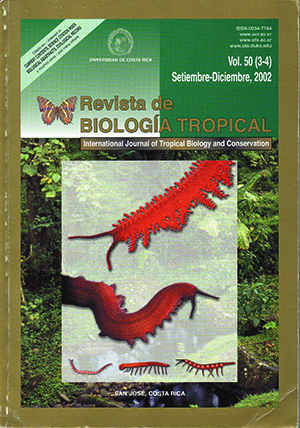Abstract
In this study, the rates of tissue regeneration and recovery from injuries that emulated the bites of either butterfly or parrotfish on colonies of Montastraea annularis exposed to different sedimentation regimesp were determined. Two small reef patches were chosen close to key Dos Mosquises, north of the Venezuelan mainland. Sixteen colonies (8 treatments + a single replicate) were artificially damaged at each patch and their recovery was monitored for three months by photographic means. The lesions were inflicted using two different techniques: scratching the polyps with a hard-nylon brush to resemble parrotfish (Scaridae) damages (Lesions Type 1) or jetting out the tissue with a syringe to simulate butterflyfish (Chaetondontidae) bites (Lesions Type 2). The diameter of the wounds ranged from 5 (small lesion) to 8 cm (large lesions) and both kinds were inflicted on the top and bottom of the colonies, with a single replicate for each treatment. The main factors affecting the recovery of the colonies’surface were lesion features (type, position and size), turbidity and chiefly, the sedimentation rate. While lesion recovery was slow where sedimentation and resuspension rates were high, tissue regeneration was improved under low sedimentation and resuspension conditions. Moreover, lesions located at the bottom of colonies regenerated completely, whereas sediments frequently covered top lesions and limited their recovery. More than 60% of the colonies with small lesions recovered almost completely in less than 90 days, whereas those with larger injuries frequently showed extensions of their damage and increased mortality. Tissue-only lesions (LT2) regenerated two to three times faster than those involving both tissue and skeletal damage (LT1).Other variables not controlled in this syudy, such as diseases, encrusting organisms overgrowth and herbivory introduced further variability to the regeneration rates.Comments

This work is licensed under a Creative Commons Attribution 4.0 International License.
Copyright (c) 2002 Revista de Biología Tropical
Downloads
Download data is not yet available.


